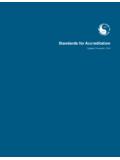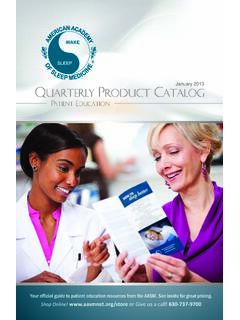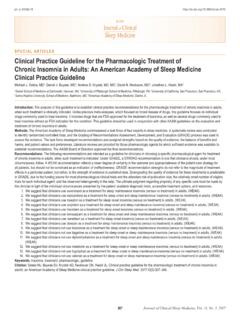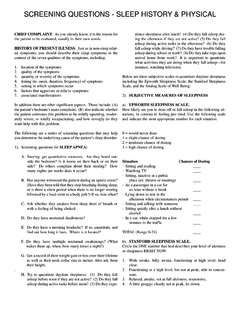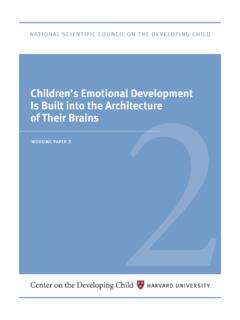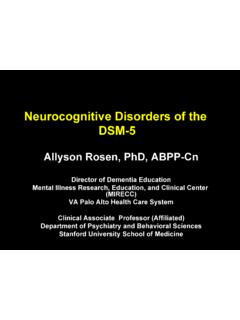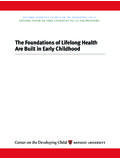Transcription of Practice Parameters for Clinical Use of ... - Medical Society
1 INTRODUCTIONIDENTIFICATION AND CHARACTERIZATION OF EXCES-SIVE SLEEPINESS IS ONE OF THE MOST IMPORTANTROLES FOR THE SLEEP CLINICIAN. Pathological sleepinessoccurs in association with disorders and conditions such as nar-colepsy, idiopathic hypersomnia, and sleep deprivation. It mayoccur due to the obstructive sleep apnea syndrome, periodic limbmovement disorder, a variety of other Medical and neurologicaldisorders, or medication side effects. Excessive sleepiness isdefined as sleepiness that occurs in a situation when an individu-al would usually be expected to be awake and alert. It affectsapproximately 5% of the general population 1,2[ ]. Excessivesleepiness is associated with significant morbidity and increasedmortality risk to the individual and others.
2 For example, sleepi-ness may adversely affect motor vehicle drivers and those inpositions involving public transportation and safety 3. In additionThe Clinical Use of the MSLT and MWT AASM Practice ParametersSLEEP, Vol. 28, No. 1, 2005113 Practice Parameters for Clinical Use of the Multiple Sleep Latency Test and theMaintenance of Wakefulness TestAn American Academy of Sleep Medicine ReportStandards of Practice Committee of the American Academy of Sleep MedicinePRACTICE PARAMETERM ichael R. Littner MD1; Clete Kushida MD, PhD2; Merrill Wise MD3; David G. Davila, MD4; Timothy Morgenthaler MD5; Teofilo Lee-Chiong MD6; Max HirshkowitzPhD7; Daniel L. Loube MD8; Dennis Bailey DDS9; Richard B. Berry MD10; Sheldon Kapen MD11; Milton Kramer MD121VA Greater Los Angeles Healthcare System and David Geffen School of Medicine at UCLA, Sepulveda, CA; 2 Stanford university center of Excellencefor Sleep Disorders, Stanford, CA;3 Departments of Pediatrics and Neurology, Baylor College of Medicine, Houston, TX; 4 Sleep Disorders center ,Baptist Medical center , Little Rock, AR; 5 Mayo Sleep Disorders center , Mayo Clinic, Rochester, MN; 6 National Jewish Medical and Research center ,Sleep Clinic, Denver, CO; 7 Baylor College of Medicine and VA Medical center , Houston, TX; 8 Sleep Medicine Institute, Swedish Medical center ,Seattle, WA;9 Englewood, Colorado; 10 Malcolm Randall VAMC/Univ.
3 Of Florida Gainesville, Fla; 11VA Medical center and Wayne State university ,Detroit, MI; 12 Maimoides Medical center , Psychiatry department , Brooklyn, NY and New York university School of Medicine, New York, NY Summary:Characterization of excessive sleepiness is an important taskfor the sleep clinician, and assessment requires a thorough history and inmany cases, objective assessment in the sleep laboratory. These prac-tice Parameters were developed to guide the sleep clinician on appropri-ate Clinical use of the Multiple Sleep Latency Test (MSLT), and theMaintenance of Wakefulness Test (MWT). These recommendationsreplace those published in 1992 in a position paper produced by theAmerican Sleep Disorders Association. A Task Force of content expertswas appointed by the American Academy of Sleep Medicine to perform acomprehensive review of the scientific literature and grade the evidenceregarding the Clinical use of the MSLT and the MWT.
4 Practice parameterswere developed based on this review and in most cases evidence basedmethods were used to support recommendations. When data were insuf-ficient or inconclusive, the collective opinion of experts was used to sup-port recommendations. These recommendations were developed by theStandards of Practice Committee and reviewed and approved by theBoard of Directors of the American Academy of Sleep MSLT is indicated as part of the evaluation of patients with suspect-ed narcolepsy and may be useful in the evaluation of patients with sus-pected idiopathic hypersomnia. The MSLT is not routinely indicated in theinitial evaluation and diagnosis of obstructive sleep apnea syndrome, or inassessment of change following treatment with nasal continuous positiveairway pressure (CPAP).
5 The MSLT is not routinely indicated for evalua-tion of sleepiness in Medical and neurological disorders (other than nar-colepsy), insomnia, or circadian rhythm disorders. The MWT may be indi-cated in assessment of individuals in whom the inability to remain awakeconstitutes a safety issue, or in patients with narcolepsy or idiopathichypersomnia to assess response to treatment with medications. There islittle evidence linking mean sleep latency on the MWT with risk of acci-dents in real world circumstances. For this reason, the sleep clinicianshould not rely solely on mean sleep latency as a single indicator ofimpairment or risk for accidents, but should also rely on Clinical should involve integration of findings from the Clinical history,compliance with treatment, and, in some cases, objective testing using theMWT.
6 These Practice Parameters also include recommendations for theMSLT and MWT protocols, a discussion of the normative data available forboth tests, and a description of issues that need further Words:multiple sleep latency test; maintenance of wakefulness test;sleepiness; hypersomnia; daytime wakefulness. Citation:Standards of Practice Committee of the American Academy ofSleep Medicine. Practice Parameters for Clinical use of the multiple sleeplatency test and the maintenance of wakefulness test. SLEEP2005;28(1) StatementDr. Berry has received research support from Dymedix, Itamar, andResMed. Dr. Davila is a paid investigator for Neurocrine, Nellcor, andPharmacia; and has participated in speaking engagements supported bySanofi and Cephalon.
7 Dr. Kushida has received research support fromGlaxoSmithKline, Pfizer, Xenoport, Boeringer Ingleheim, and Respironics;is a Medical advisory board member and a speakers bureau member forGlaxoSmithKline; and participates in speaking engagements supported byGlaxoSmithKline. Dr. Littner is a member of the speakers bureau forGlaxoSmithKline, Boehringer-Ingelheim, and Novartis; and is or hasrecently been a consultant for GlaxoSmithKline, Astrazeneca, Pfizer,Novartis, Boehringer-Ingelheim, Otsuka. Dr. Hirshkowitz is a member ofthe speakers bureau for Sanofi and Cephalon; and has received hono-raria from Sanofi and Cephalon. Dr. Bailey is a partner in DentalAppliance Innovators, Inc.; and participates in dental and Medical educa-tion for Dental Appliance Innovators, Inc.
8 Drs. Loube, Wise, Kramer,Morgenthaler, Kapen, and Lee-Chiong have indicated no financial con-flicts of 12/30/2004 8:47 AM Page 113to providing a diagnosis and treatment plan for patients withexcessive sleepiness, the sleep clinician is responsible for assess-ing response to treatment, and making Clinical decisions thataffect individual and public 1992 the American Academy of Sleep Medicine (formerlythe American Sleep Disorders Association) published a positionpaper on the Clinical use of the Multiple Sleep Latency Test(MSLT) 4. The paper presented consensus opinion by theStandards of Practice committee (SPC) of the AASM. Clinicalguidelines were accompanied by supporting evidence for the posi-tion paper.
9 Since publication of the Practice guidelines, the scien-tific literature regarding objective assessment of sleepiness hasexpanded significantly. More recent studies address the clinicalusefulness of the MSLT, and a small but significant group of stud-ies specifically address the operating characteristics of the MSLTas a diagnostic test. The Maintenance of Wakefulness Test(MWT), another laboratory-based objective measure of sleepi-ness/wakefulness, was not covered in the original paper. Since1992 the MWT has gained wider Clinical acceptance, results arecited more frequently in the literature, and normative data havebeen collected. Finally, methods used by the Standards of Practicecommittee have evolved since 1992, and Practice Parameters arenow developed using primarily an evidence-based approach.
10 Forthese reasons, the following new and updated recommendationswere developed regarding the Clinical use of the MSLT and Practice Parameters replace the earlier purpose of this Practice parameter paper is to present rec-ommendations for the clinicaluseof the MSLT and are based on the accompanying review paperproduced by a Task Force established by the Standards of PracticeCommittee 5. The paper reviews the history of development of theMSLT and MWT, discusses issues related to the objective mea-surement of sleepiness, and grades the scientific evidence for useof the MSLT and MWT. The review paper and these practiceparameters focus on the MSLT and MWT, the two most common-ly used objective, laboratory-based methods for characterization ofthe ability to fall asleep and stay awake, respectively.
